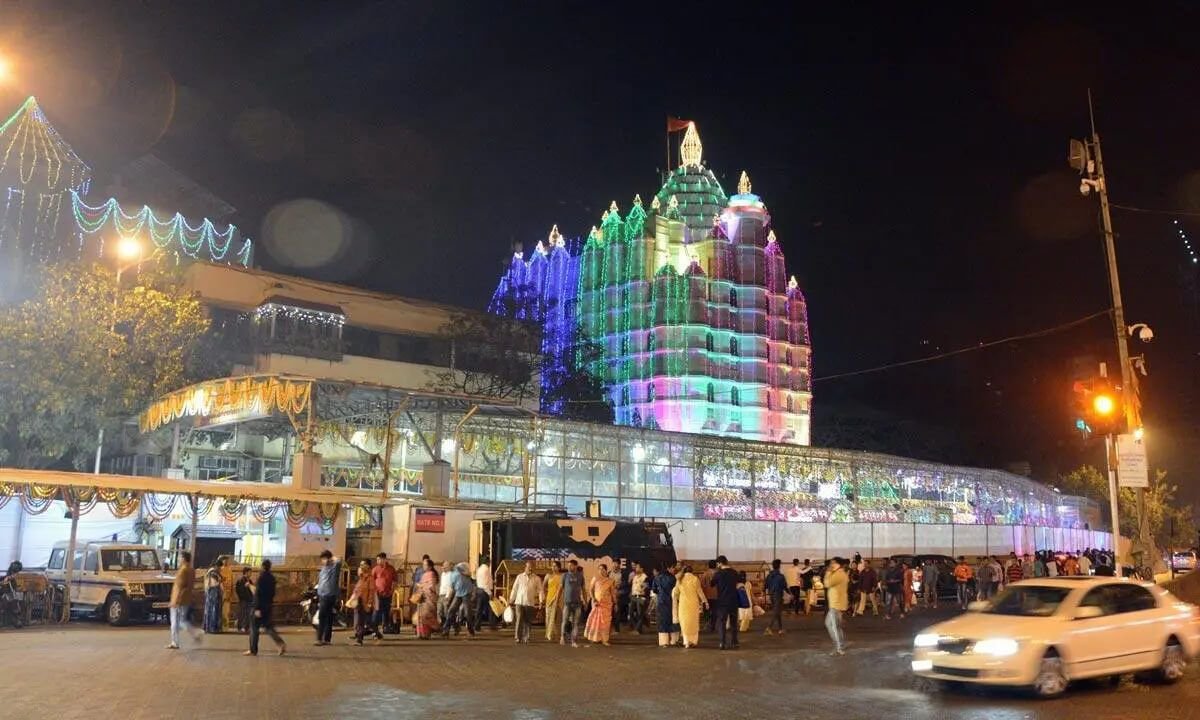Sacred Spaces: Top Temples for Navratri Celebrations in Maharashtra
India celebrates the festival of Navratri, which honors Goddess Durga, with great zeal, especially in Maharashtra. In addition to showcasing the state's rich cultural legacy, this nine-night event provides a lively backdrop for content producers, picture-takers, and filmmakers.
During this period, Maharashtra’s temples become hubs of celebration and devotion, bringing thousands of visitors and devotees alike. Sceneloc8.com examines the historical and cultural significance of some of the most prominent Maharashtra temples that host Navratri celebrations.
- Kolhapur’s Mahalakshmi Temple
Historical Importance: The Mahalakshmi Temple is one of Kolhapur’s Shakti Peethas devoted to the goddess Mahalakshmi. The Chalukya dynasty constructed the temple in the ninth century.
Cultural Importance: The temple is decked out in lights and flowers for Navratri, creating a fantastic ambiance. Numerous specific prayers and offerings are part of the daily ceremonies that draw thousands of followers.
Aesthetic Appeal: The temple’s elaborate architecture and colorful decorations provide a breathtaking photographic background. During the evening aarti (prayer service), a unique visual display is provided.
Accessibility: Easily reachable by road and rail, Kolhapur is its location. However, during the festival, expect sizable crowds.
Traditional Elements for Shoots:
Seize the shimmering lamps of the twilight aarti.
Take note of the elaborate carvings on the walls of the temple.
Take pictures of followers performing rituals.
- Mumbai’s Siddhivinayak Temple
Historical Significance: Dedicated to Lord Ganesha and founded in 1801, Siddhivinayak Temple experiences a spike in visitors during Navratri as followers seek blessings for fresh starts.
Cultural Significance: The temple organizes several cultural activities during Navratri, including devotional singing and dancing performances.
Aesthetic Appeal: The temple’s elaborate interior and golden dome provide a stunning photo backdrop. The vibrant mood of Navratri enhances the brilliance of your images.
Accessibility: Located in Mumbai’s Prabhadevi, it is easily reached by public transit, although it can get congested sometimes.
Traditional Elements for Shoots:
Record the fervor of followers as they chant and dance.
Capture on camera the minute intricacies of the temple’s design.
Take pictures of the varied group that comes to receive blessings.
- Karad’s Devi Koynamai Temple
Historical Significance: This temple, which honors Goddess Koynamai, has been a destination for pilgrims for generations. For the locals, it is crucial spiritually.
Cultural Importance: Special rites are carried out during Navratri, resulting in a joyous atmosphere brimming with devotion and festivity.
Aesthetic Appeal: The temple, surrounded by rich vegetation, has beautiful scenery that is ideal for nature photography.
Accessibility: It is situated in Karad and can be reached by car, although getting there locally from larger cities may be necessary.
Traditional Elements for Shoots:
Take in the tranquil atmosphere and breathtaking scenery.
Record the rites that followers carry out.
Watch videos of traditional dance performances done on Navratri.
- Kolhapur’s Shree Jyotiba Devasthan
Historical Significance: Jyotiba Temple has long been a popular destination for pilgrims and is devoted to Lord Jyotiba.
Cultural Importance: Many devotees visit the temple to celebrate and ask for blessings during Navratri.
Aesthetic Appeal: The hilltop position’s expansive vistas make it an ideal setting for breathtaking landscape photography.
Accessibility: Due to its hilltop location close to Kolhapur, tourists may need to drive up narrow roads or go on a walk.
Traditional Elements for Shoots:
Take in expansive vistas of the surroundings.
Record the customary sacrifices offered by followers.
Record cultural events happening outside the temple on camera.
- Mumbai’s Mumba Devi Temple
Historical Significance: This historic temple honoring Goddess Mumba Devi is considered among Mumbai’s oldest, built in the fourteenth century.
Cultural Significance: Special pujas, or prayer rituals, are held during Navratri, drawing sizable audiences who come to ask the goddess for favors.
Aesthetic Appeal: The temple’s colorful Navratri decorations provide a lively ambiance ideal for taking dynamic pictures.
Accessibility: Located in Mumbai’s Bhuleshwar, it is conveniently reachable by public transit, though weekends may get very busy.
Customary Components for Shoots:
Take in the vibrant decorations and joyous mood.
Record the ritualistic actions of devotees.
Watch local traditional dance performances on film.
Helpful Advice for Content Producers
Plan Ahead: Consider visiting early in the day or late at night when it’s less congested, as Navratri attracts enormous crowds.
Equipment: For maximum mobility, use lightweight gear. When allowed, take aerial photos using drones.
Respect Local Customs: To uphold local traditions, you should always obtain consent before taking pictures of people or private ceremonies.
Interact with Locals: Asking them about their experiences may give your content more depth and give your images context.
Capture Emotions: Pay close attention to capturing sincere feelings during prayers and festivities since viewers find great resonance.
Conclusion
During Navratri celebrations, Maharashtra’s temples provide spiritual comfort and colorful backgrounds for artistic expression. These hallowed venues offer plenty of opportunities for artists to display their work while honoring customs, catering to the needs of content creators who want to capture this extraordinary fusion of culture and devotion. By using these sites appropriately, creators may celebrate one of India’s most beloved holidays and inspire others through their work.

